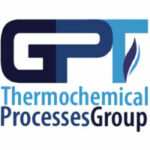ABOUT ME
Associate professor at the Department of Chemical and Environmental Engineering of the University of Zaragoza (Spain), and researcher at the Thermochemical Process Group (GPT) of the Aragón Institute of Engineering Research (I3A) of the University of Zaragoza (Spain).
My research interests are in the fields of high temperature chemistry, chemical kinetic modeling, and formation and destruction of air pollutants (nitrogen oxides, sulfur compounds, …) in energetic and industrial processes/applications.
BIOGRAPHY
I graduated with a Master in Chemical Engineering from the University of Zaragoza (Spain) and in 2013 I got the degree of PhD in Chemical Engineering at the same university. As part of this investigation, in January-April 2011, I made a short term collaboration at the (Combustion Harmful Emission Control) CHEC group of the Technical University of Denmark. My research activities were related to hydrocarbon conversion in presence of different gaseous compounds that can be typically present in atmospheres with recycled flue gas (RFG), such as CO2, NOx or SO2, to provide of the necessary experimental data both to get
insight into the phenomena controlling the process and to improve and update a gas-phase combustion scheme in relation to different reaction environments.
In 2015- 2017 I worked as a post-doctoral researcher at the Instituto de Carboquímica (ICB) of the Spanish National Research Council (CSIC), with a research Grant funded by the Spanish Government.
During this time my research activities were focused on the development and optimization of oxygen carriers for the Chemical Looping Combustion process. In June-September 2016 I made a short term collaboration at the Department of Mechanical Engineering (DEM) of the Technical University of Lisbon (Portugal), to study the influence of the presence of metals on the combustion of biomass.
Since 2017, I am a researcher at the Thermochemical Process Group (GPT) of the Aragón Institute of Engineering Research (I3A) of the University of Zaragoza (Spain), performing fundamental studies related to the formation and destruction of main pollutants in thermo-chemical processes.
PUBLICATIONS
2023
Alzueta, María U; Abián, María; Elvira, I.; Mercader, Víctor D; Sieso, L.
Unraveling the NO reduction mechanisms occurring during the combustion of NH3/CH4 mixtures Journal Article
In: Combustion and Flame, vol. 257, pp. 112531, 2023, ISSN: 0010-2180.
@article{alzueta_unraveling_2023,
title = {Unraveling the NO reduction mechanisms occurring during the combustion of NH3/CH4 mixtures},
author = {María U Alzueta and María Abián and I. Elvira and Víctor D Mercader and L. Sieso},
url = {https://www.sciencedirect.com/science/article/pii/S0010218022005405},
doi = {10.1016/j.combustflame.2022.112531},
issn = {0010-2180},
year = {2023},
date = {2023-11-01},
urldate = {2023-11-01},
journal = {Combustion and Flame},
volume = {257},
pages = {112531},
series = {James A. Miller Special Commemorative Issue},
abstract = {The interaction between NH3, CH4 and NO under different conditions of interest for combustion applications is analyzed, from both experimental and kinetic modeling points of view. Reduction of NO by reburn and by SNCR (selective non-catalytic reduction) strategies is evaluated, through an extense systematic study of the influence of the main variables of interest for NO reduction, by means of laboratory flow-reactor experiments at atmospheric pressure. Variables analyzed include: temperature in the 700 to 1500 K range, air stoichiometry from fuel-rich (λ = 0.31) to fuel-lean conditions (λ = 2.21), NH3/CH4 ratio in the 0.4 to 10.78 range, NH3/NO ratio in the 0.49 to 2.60 range the, and CH4/NO ratio in the 0.37 to 1.98 range, dilution level, and bath gas by using nitrogen and argon, the latter to allow the precise determination of nitrogen balances. Results are interpreted using a literature reaction mechanism, together with reaction pathway analysis tools, and the main findings are discussed. Results indicate that ammonia promotes the conversion of methane, while methane inhibits the conversion of ammonia, due to the competition for radicals of both components in the mixture. The interaction of ammonia and methane implies that the reduction of NO by NH3/CH4 mixtures is comparatively lower than the reduction obtained by NH3 and CH4 independently. Implications for practical applications of the reduction of NO by the studied mixtures are discussed.},
keywords = {},
pubstate = {published},
tppubtype = {article}
}
2021
Abián, María; Benés, Mario; Goñi, A; Muñoz, B; Alzueta, María U
Study of the oxidation of ammonia in a flow reactor. Experiments and kinetic modeling simulation Journal Article
In: Fuel, vol. 300, pp. 120979, 2021, ISSN: 0016-2361.
@article{Abian2021,
title = {Study of the oxidation of ammonia in a flow reactor. Experiments and kinetic modeling simulation},
author = {María Abián and Mario Benés and A Goñi and B Muñoz and María U Alzueta},
doi = {10.1016/J.FUEL.2021.120979},
issn = {0016-2361},
year = {2021},
date = {2021-09-01},
journal = {Fuel},
volume = {300},
pages = {120979},
publisher = {Elsevier},
abstract = {The present work is focused on the analysis of the ammonia oxidation process and the formation of main nitrogen oxides (NO, NO2 and N2O) over a wide range of temperatures and O2 reaction environments. Experiments are performed at atmospheric pressure in a laboratory quartz tubular flow reactor, covering the temperature range of 875 to 1450 K and for different air excess ratios (from pyrolysis to very oxidizing conditions). The experimental results are simulated and interpreted in terms of a detailed chemical-kinetic mechanism. Reaction path and sensitivity analyses are used to delineate the NH3 oxidation scheme.},
keywords = {},
pubstate = {published},
tppubtype = {article}
}
Benés, Mario; Pozo, Guillermo; Abián, María; Millera, Ángela; Bilbao, Rafael; Alzueta, María U
Experimental Study of the Pyrolysis of NH3under Flow Reactor Conditions Journal Article
In: Energy and Fuels, 2021, ISSN: 15205029.
@article{Benes2021,
title = {Experimental Study of the Pyrolysis of NH3under Flow Reactor Conditions},
author = {Mario Benés and Guillermo Pozo and María Abián and Ángela Millera and Rafael Bilbao and María U Alzueta},
url = {https://dx.doi.org/10.1021/acs.energyfuels.0c03387},
doi = {10.1021/acs.energyfuels.0c03387},
issn = {15205029},
year = {2021},
date = {2021-01-01},
journal = {Energy and Fuels},
publisher = {American Chemical Society},
abstract = {The possibility of using ammonia (NH3), as a fuel and as an energy carrier with low pollutant emissions, can contribute to the transition to a low-carbon economy. To use ammonia as fuel, knowledge about the NH3 conversion is desired. In particular, the conversion of ammonia under pyrolysis conditions could be determinant in the description of its combustion mechanism. In this work, pyrolysis experiments of ammonia have been performed in both a quartz tubular flow reactor (900-1500 K) and a non-porous alumina tubular flow reactor (900-1800 K) using Ar or N2 as bath gas. An experimental study of the influence of the reactor material (quartz or alumina), the bulk gas (N2 or Ar), the ammonia inlet concentration (1000 and 10a 000 ppm), and the gas residence time [2060/T (K)-8239/T (K) s] on the pyrolysis process has been performed. After the reaction, the resulting compounds (NH3, H2, and N2) are analyzed in a gas chromatograph/thermal conductivity detector chromatograph and an infrared continuous analyzer. Results show that H2 and N2 are the main products of the thermal decomposition of ammonia. Under the conditions of the present work, differences between working in a quartz or non-porous alumina reactor are not significant under pyrolysis conditions for temperatures lower than 1400 K. Neither the bath gas nor the ammonia inlet concentration influence the ammonia conversion values. For a given temperature and under all conditions studied, conversion of ammonia increases with an increasing gas residence time, which results into a narrower temperature window for NH3 conversion.},
keywords = {},
pubstate = {published},
tppubtype = {article}
}
2020
Colom-Díaz, Juan Manuel; Leciñena, M; Peláez, A; Abián, María; Millera, Ángela; Bilbao, Rafael; Alzueta, María U
Study of the conversion of CH4/H2S mixtures at different pressures Journal Article
In: Fuel, vol. 262, pp. 116484, 2020, ISSN: 00162361.
@article{Colom-Diaz2020,
title = {Study of the conversion of CH4/H2S mixtures at different pressures},
author = {Juan Manuel Colom-Díaz and M Leciñena and A Peláez and María Abián and Ángela Millera and Rafael Bilbao and María U Alzueta},
doi = {10.1016/j.fuel.2019.116484},
issn = {00162361},
year = {2020},
date = {2020-02-01},
journal = {Fuel},
volume = {262},
pages = {116484},
publisher = {Elsevier Ltd},
abstract = {Due to the different scenarios where sour gas is present, its composition can be different and, therefore, it can be exploited through different processes, being combustion one of them. In this context, this work deals with the oxidation of CH4 and H2S at different pressures and under a wide variety of conditions. The oxidation has been evaluated experimentally in two different flow reactor set-ups, one working at atmospheric pressure and another one operating from atmospheric to high pressures (40 bar). Different CH4/H2S mixtures have been tested, together with different oxygen concentrations and in the temperature range of 500–1400 K. The experimental results obtained show that the oxidation of the CH4/H2S mixtures is shifted to lower temperatures as pressure increases, obtaining the same trends at atmospheric pressure in both experimental set-ups. H2S oxidation occurs prior to CH4 oxidation at all conditions, providing radicals to the system that promote CH4 oxidation to lower temperatures (compared to neat CH4 oxidation). This effect is more relevant as pressure increases. H2S oxidation is inhibited by CH4 at atmospheric pressure, being more noticeable when the CH4/H2S ratio is higher. At higher pressures, the H2S conversion occurs similarly in the absence or presence of CH4. The experimental results have been modeled with an updated kinetic model from previous works from the literature, which, in general, matches well the experimental trends, while some discrepancies between experimental and modeling results at atmospheric pressure and 40 bar are found in the conversion of H2S and CH4.},
keywords = {},
pubstate = {published},
tppubtype = {article}
}
2019
Colom-Díaz, Juan Manuel; Abián, María; Millera, Ángela; Bilbao, Rafael; Alzueta, María U
Influence of pressure on H2S oxidation. Experiments and kinetic modeling Journal Article
In: Fuel, vol. 258, pp. 116145, 2019, ISSN: 00162361.
@article{Colom-Diaz2019b,
title = {Influence of pressure on H2S oxidation. Experiments and kinetic modeling},
author = {Juan Manuel Colom-Díaz and María Abián and Ángela Millera and Rafael Bilbao and María U Alzueta},
doi = {10.1016/j.fuel.2019.116145},
issn = {00162361},
year = {2019},
date = {2019-12-01},
journal = {Fuel},
volume = {258},
pages = {116145},
publisher = {Elsevier Ltd},
abstract = {The oxidation of H2S at different manometric pressures (0.6–40 bar), in the temperature range of 500–1000 K and under slightly oxidizing conditions ($łambda$ = 2), has been studied. Experiments have been performed in a quartz tubular flow reactor. The results have shown that H2S conversion shifts to lower temperatures as the pressure increases. The kinetic model used in this work is based on a previous one proposed by the authors to describe H2S oxidation at atmospheric pressure, which has been updated with a H2/O2 reaction subset for high pressures. Model results match fairly well the experimental ones both from the present work and from the literature. The reaction pathways of H2S oxidation analyzed are similar to the ones at atmospheric pressure. The differences are found in the radicals that are involved in the oxidation process at the different pressures. For a given temperature it is shown that, under the operating conditions of this work, pressure will have a major role than the gas residence time in the oxidation rate.},
keywords = {},
pubstate = {published},
tppubtype = {article}
}

